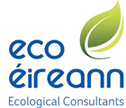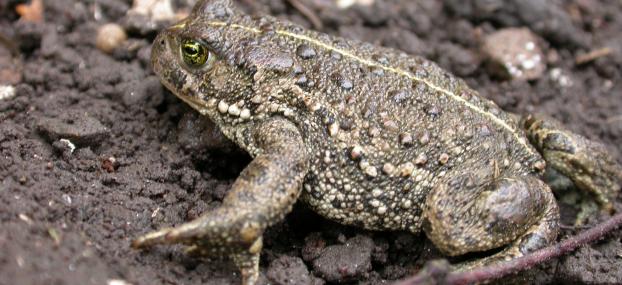Ireland has just three species of amphibians, which are animals that live both on land and in water. Their breeding and juvenile period occurs in and around still water while their adult life is generally spent on land.
In Ireland we have common frogs, smooth newts and natterjack toads. Where frogs and frog spawn are a common sight and smooth newts are frequent visitors to garden pond during the spring, our most elusive and rare amphibian is the natterjack toad.
Being our rarest amphibian, we have compiled some interesting facts about natterjack toads to bring them into the limelight:
- Records of this species in Ireland date back to 1805!
- Being so rare and requiring certain habitat and temperature requirements, they have only been recorded in Co. Kerry and been found mainly along the Kerry coastline.
- Natterjack toads hibernate over the winter in burrows which they dig themselves (usually in sandy soils) or in dry stone walls and emerge during springtime to breed around shallow margins of ponds.
- Toad spawn looks very different from frog spawn, where it looks like a string of spawn, and it is wound around pond vegetation.
- They prefer breeding ponds that dry up in summer (which are then less favourable to predators) with short (grazed) marginal vegetation.
- Eggs and tadpoles are unpalatable to most creatures as they contain a noxious chemical but some hardcore animals, such as dragon fly and beetle larvae, will dine on them in water.
- Similarly, when the juveniles and adults emerge, they are unpalatable to most but will be taken by crow species, gulls, foxes and rats.
- Natterjack toads can be identified by the presence of a yellow strip along their back, perhaps a warning to predators of their nasty chemical aftertaste.
- Natterjack toads have shorter legs than common frogs and tend to walk rather than hop.
- Adults will tend to stay within 200m of a breeding pond but have been recorded up to 1km from breeding ponds, a long distance to travel with little legs!
Being restricted to such a small area, natterjack toads are highly sensitive to habitat change and destruction. They are a protected species listed on Annex IV of the Habitats & Species Directive (92/43/EEC).
EcoÉireann can help clients by carrying out surveys for these animals and can provide mitigation plans to ensure the viability of this species. If you think you have habitat that would be suitable to support the natterjack toad, please get in touch and we would be happy to talk with you about planning a survey. Key survey time would be early spring when spawn is readily identifiable in ponds.

